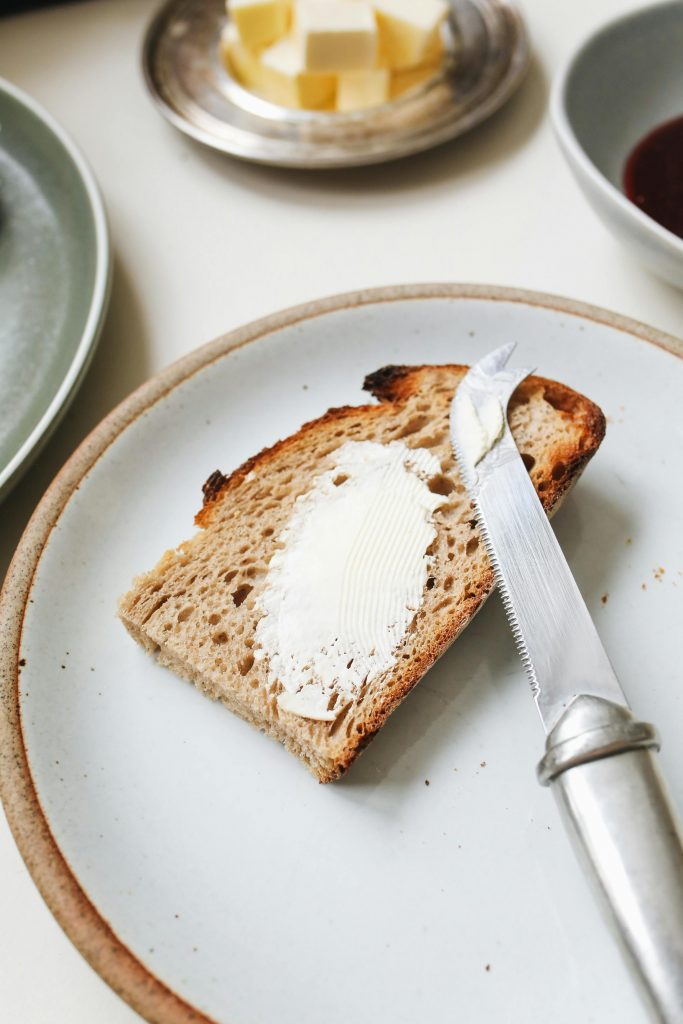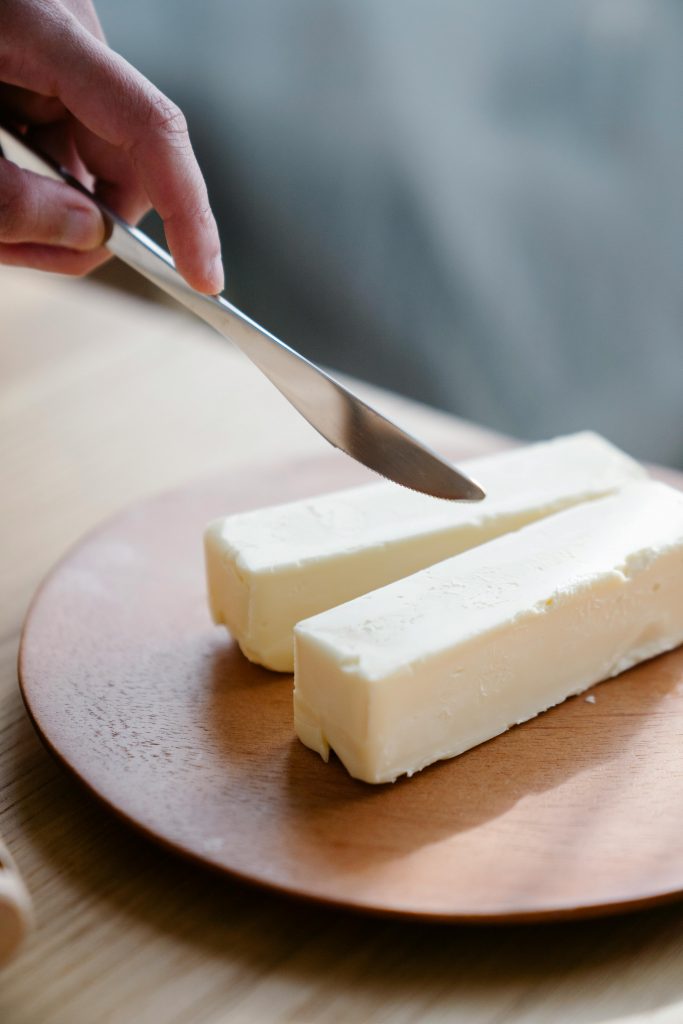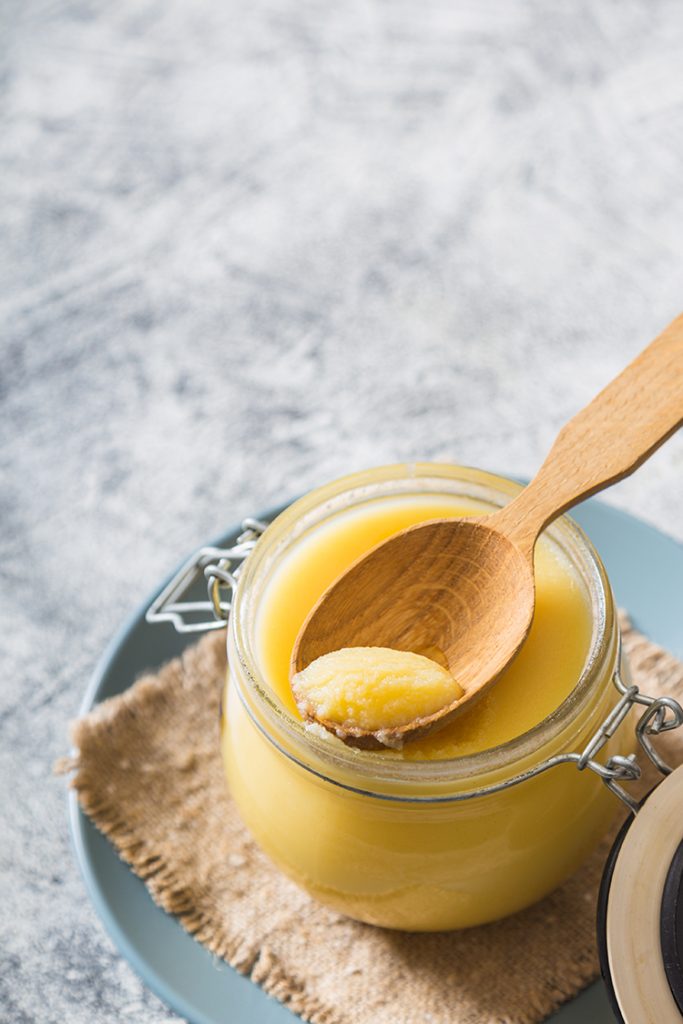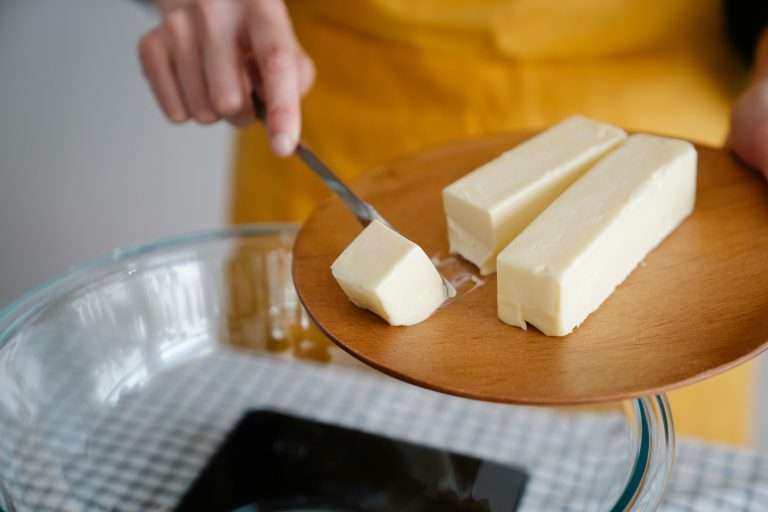When it comes to cooking and baking, choosing the right fat can make all the difference!
Butter, margarine, and ghee are three popular options, but they each have distinct characteristics, flavours, and health benefits. So, which one is best for your kitchen?
Butter
Butter is a staple in most kitchens and has been used for centuries. Made from churned cream, butter is rich, creamy, and packed with flavour. It contains saturated fats, which have long been debated in the health world, but it also provides essential fat-soluble vitamins like A, D, E, and K.
Why choose butter?
- Adds a rich, natural flavour to baked goods, sauces, and spreads.
- Contains beneficial fatty acids that may support gut health.
- No artificial additives or preservatives if you opt for real butter.

However, butter does contain lactose and milk proteins, so it may not be suitable for those with dairy intolerances. It also has a relatively low smoke point (about 175°C), making it less ideal for high-heat cooking.
Margarine
Margarine was originally created as a cheaper alternative to butter, and over time, it has evolved into a household staple. Made from vegetable oils, margarine contains mostly unsaturated fats, which are generally considered better for heart health.
Read more: Long-life milk vs fresh milk: Which is better and what is the difference?
Why choose margarine?
- Contains less saturated fat than butter, making it a popular heart-friendly choice.
- Often fortified with vitamins like A and D.
- A good dairy-free option for those with lactose intolerance.

However, not all margarines are created equal. Some contain hydrogenated oils, which produce trans fats—bad news for heart health. When choosing margarine, opt for soft, non-hydrogenated versions made with healthier oils like olive or avocado oil.
Ghee
Ghee is essentially clarified butter, which means it has been heated to remove water and milk solids, leaving behind pure butterfat. This process enhances its flavour, giving it a nutty, caramel-like taste, and increases its shelf life.
Why choose Ghee?
- Higher smoke point (about 250°C), making it ideal for frying and roasting.
- Free from lactose and casein, making it a better option for those with dairy sensitivities.
- Rich in antioxidants and fat-soluble vitamins, similar to butter.
Ghee has been a key ingredient in Indian and Middle Eastern cooking for centuries and is also used in Ayurvedic practices for its believed healing properties. While it is high in saturated fat, research suggests that moderate consumption may not be as harmful as once thought.

Which one is healthier?
There’s no one-size-fits-all answer—it depends on your dietary needs and cooking style.
- If you love rich flavours and traditional cooking, butter is a great option in moderation.
- If you’re looking for a heart-friendly alternative, choose a high-quality margarine with healthy oils.
- If you need a dairy-free alternative with a high smoke point, ghee is your best bet.
The key factor that sets buttery spreads apart are their calorie content, fat quantity, and fat type. Among butter, margarine, vegan butter, and ghee, ghee ranks highest in all three categories. On the other hand, a well-chosen margarine can be the lowest in fat and calories.
For a heart-healthy option, opt for a margarine where water is the main ingredient, along with olive, avocado, flax, or canola oil. These plant-based oils provide beneficial fats while keeping overall fat and calorie levels in check, making them a better choice for weight management.
ALSO SEE: Coconut Cream vs. Coconut Milk vs. Cream of Coconut: When and how to use each in your cooking
Coconut Cream vs. Coconut Milk vs. Cream of Coconut: When and how to use each in your cooking
Image: Pexels

